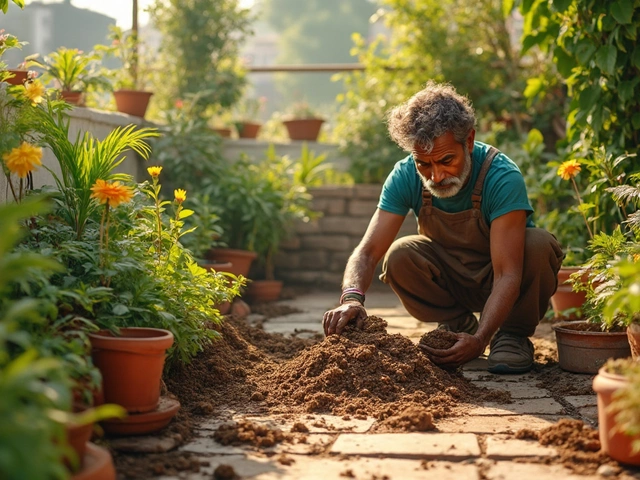Watering Indoor Plants: Simple Ways to Keep Your Houseplants Happy
Did you know many indoor plants die not from lack of light but from wrong watering? Getting the water right can turn a droopy leaf into a thriving green friend. Below you’ll find straight‑to‑the‑point advice you can start using today.
How Often Should You Water?
There’s no one‑size‑fits‑all schedule. The first thing to check is the soil surface. If the top inch feels dry, it’s usually time to water. Bigger pots dry out slower than tiny ones, so a cactus in a 4‑inch pot may need water once a month, while a spider plant in a 12‑inch pot might need a drink every 5‑7 days.
Season matters, too. In winter most indoor plants go into a slower growth phase and need less water. Reduce watering by 30‑40 % compared to summer. Always adjust based on how fast the soil dries, not a calendar.
How Much Water Is Right?
Pour until water starts spilling out of the drainage holes. This ensures the entire root ball gets wet and excess water can drain away. Never let a plant sit in a saucer full of water; that creates root rot.
If you’re unsure, use the "finger test": stick your finger about two inches deep. When you feel moisture at that depth, hold off. When it feels dry, water until it drains.
For plants that like consistent moisture (like ferns), water a little more often but in smaller amounts. For succulents, let the soil dry completely before a deep soak.
Water quality matters. Tap water often contains chlorine, which can stress sensitive plants. Let tap water sit for an hour to let chlorine evaporate, or use filtered water for delicate varieties.
Temperature is another factor. Cold water can shock roots. Use room‑temperature water, especially in winter when indoor heat can make water feel even colder.
When you water, aim for the soil, not the leaves. Wet leaves stay damp longer, inviting fungal problems. If you need extra humidity for a tropical plant, mist lightly or place a humidity tray nearby instead of soaking the foliage.
Finally, keep an eye on plant signals. Yellowing leaves, soft stems, or a musty smell often mean over‑watering. Crispy leaf edges, curling, or a dry soil crust point to under‑watering. Adjust quickly to avoid long‑term damage.
By checking soil moisture, matching water amount to pot size, and using the right water temperature, you’ll give your indoor plants the hydration they need without the guesswork. Happy watering!
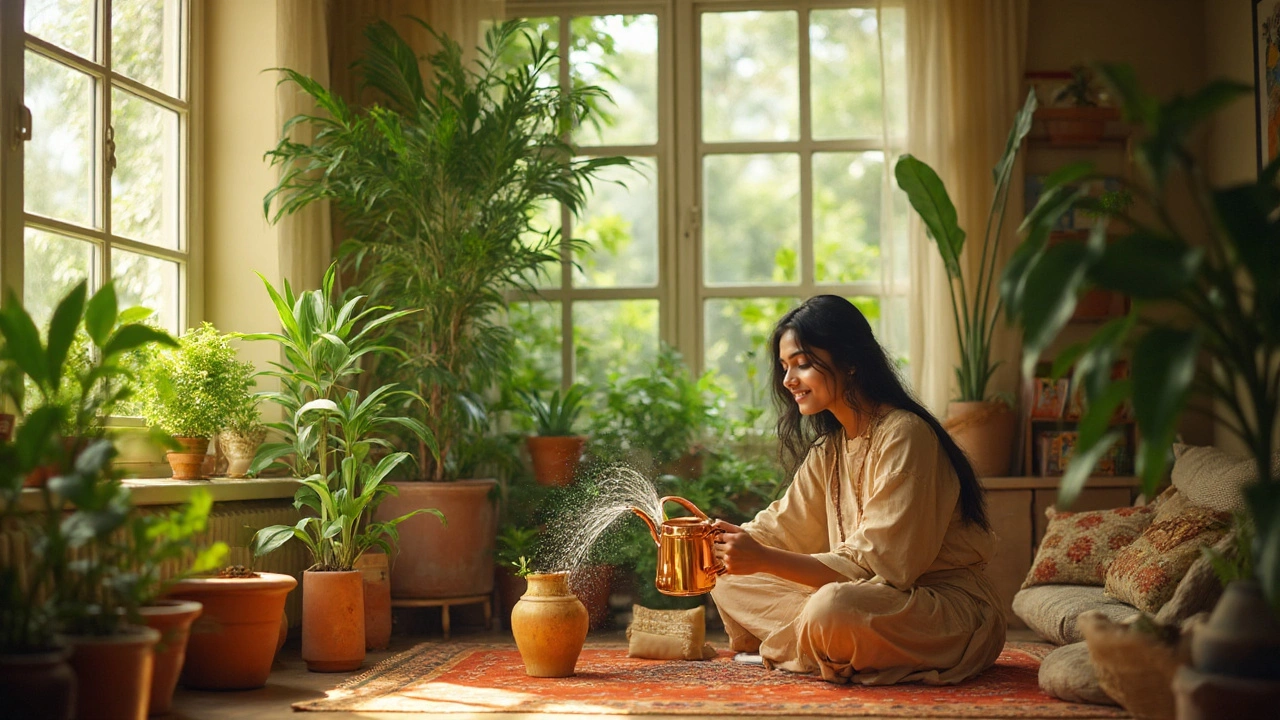
How to Take Care of Indoor Plants: Simple Tips for Thriving Houseplants
Discover practical tips on indoor plant care: watering, lighting, humidity, and troubleshooting for healthy houseplants. Keep your indoor jungle thriving.
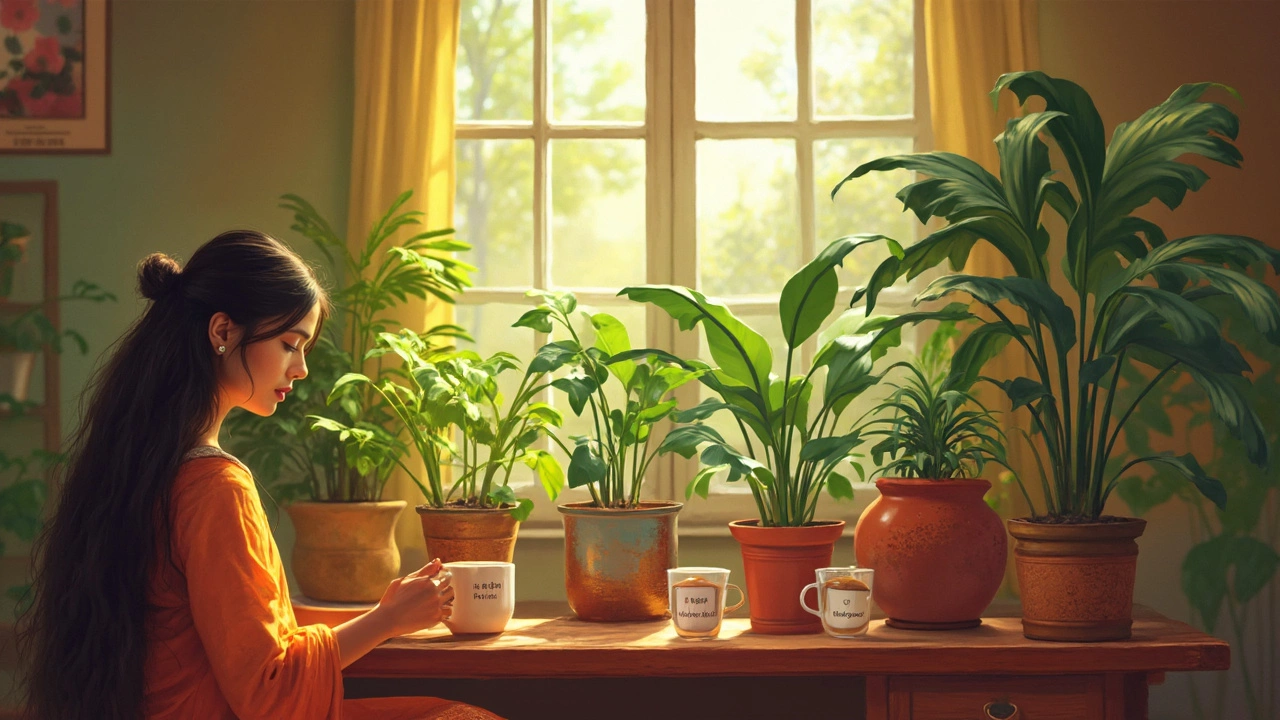
Best Liquid to Water Plants: What Actually Works?
Trying to figure out if plain tap water is enough for your indoor plants? This article breaks down the reality behind popular liquids like rainwater, filtered water, and even funky options like leftover tea. You’ll get clear advice on what helps plants thrive and what could hurt them. Expect straightforward pros, cons, and honest tips, whether you’re a newbie or someone who treats their monstera like royalty. Skip the myths and get right to the liquid truth.
About
Indoor Plant Care
Latest Posts
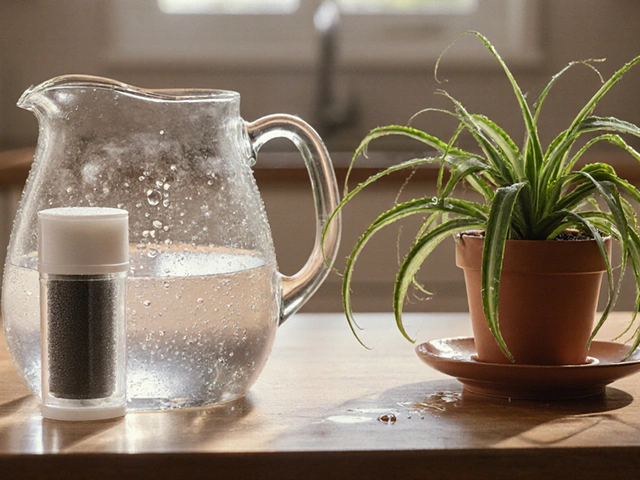

Which Is the Luckiest Flower in India? Discover Spiritual and Cultural Wonders
By Alden Thorne Aug 2, 2025
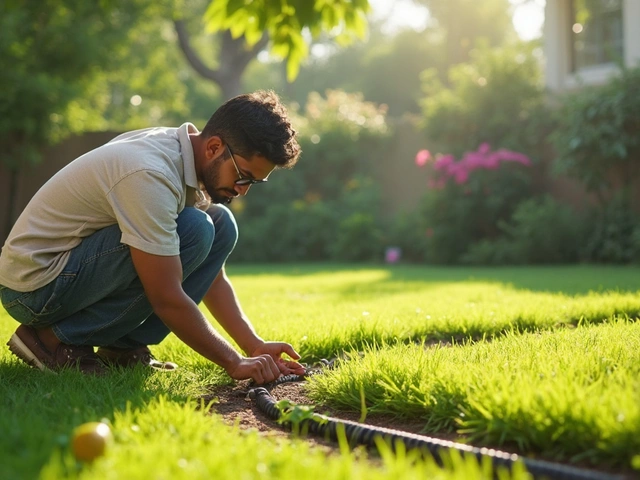
Can You Mow Over Drip Irrigation? What You Need to Know
By Alden Thorne Jun 10, 2025

Quick and Effective Ways to Boost Soil Nitrogen Levels
By Alden Thorne Dec 7, 2024
